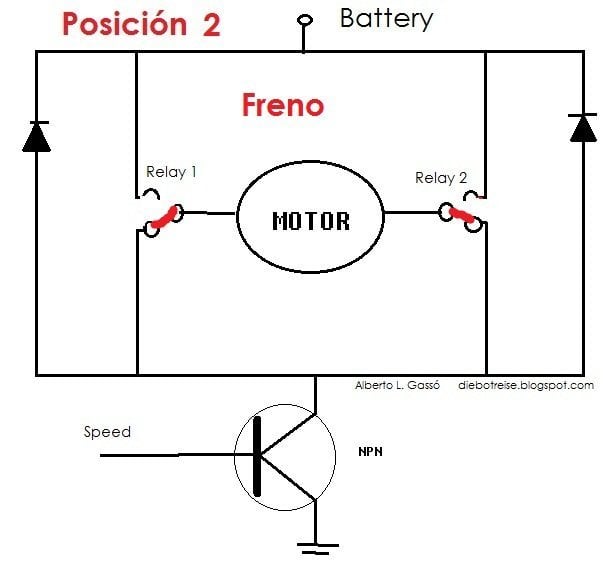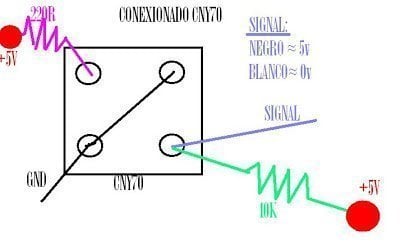Nowadays almost all the H-bridges are based on MOSFETs, but some time ago it was not always like that.
In this article, I will explain how this old school relay H-Bridge works…
Advantages?
The main advantage of the relays versus the transistors was that the voltage doesn’t fall down, and it doesn’t depend on the power used.
Also, relays don’t heat up admitting more power.
The topology of an H bridge
A basic schematic can be drawn as:
The architecture utilizes 2 relays to control one motor.
The diodes are used for “eating” the intensity peaks at the moment that the motor changes the direction. This avoids the spark produced during the inductive component of the load in the commutation. It doesn’t influence the intensity, but it extends the lifetime of the relays. Common diodes are enough, so you don’t need fast diodes.
In small motors, you can remove the diodes.
If the intensity is important during the inversion, relays can be activated by sequence.



httpv://www.youtube.com/watch?v=fo-H8QwsPrY








A ” Double Pole Double Throw ” (DPDT) relay can generally achieve the same electrical functionality as an H bridge (considering the usual function of the device). However a semiconductor-based H bridge would be preferable to the relay where a smaller physical size, high speed switching, or low driving voltage (or low driving power) is needed, or where the wearing out of mechanical parts is undesirable.
Thanks for the info Kevin!